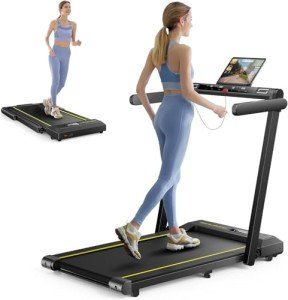20 Rising Stars To Watch In The Non Electric Running Machine Industry

The Rise of Non-Electric Running Machines: A Sustainable Approach to Home Fitness
Recently, the physical fitness industry has seen a considerable shift towards sustainable and energy-efficient equipment. Amongst the wide variety of options, non-electric running makers have actually sculpted out a specific niche on their own, interesting physical fitness enthusiasts who value eco-friendliness, functionality, and cost-effectiveness. This short article explores the advantages of non-electric running machines, compares them with their electric counterparts, and responses regularly asked questions about these innovative fitness tools.
What is a Non-Electric Running Machine?
A non-electric running machine, frequently described as a manual treadmill, is a piece of workout devices that permits users to walk or run without the requirement for electricity. Rather of depending on a motor, these devices utilize the user's own physical effort to move the running belt. This function not only makes them environmentally friendly but also motivates a more natural and interesting exercise experience.
Secret Features of Non-Electric Running Machines
| Function | Description |
|---|---|
| Self-Powered | Runs without electricity; users power the treadmill through their motions. |
| Adjustable Incline | A lot of models use incline settings to improve workout strength. |
| Compact Design | Generally lighter and more space-efficient than electric treadmills. |
| Low Maintenance | Fewer electronic components implies easier upkeep and longevity. |
| Resilience | Constructed with robust products to stand up to intense usage; typically more rugged than electric designs. |
Benefits of Non-Electric Running Machines
1. Eco-Friendly
Being self-powered, non-electric running makers do not contribute to carbon emissions or energy consumption. For ecologically conscious consumers, this aspect aligns with a lifestyle that focuses on sustainability.
2. Cost-efficient
Without the requirement for electricity, users can save money in the long run, both in regards to energy costs and the cost of upkeep. The lack of complicated electronics means less probability of breakdown, potentially saving on repairs.
3. Engagement and Intensity
Due to the manual nature of operation, users engage more muscles during the workout. Manual Walking Pad can lead to a more extreme cardiovascular workout, as the effort is totally dictated by the user's speed and force.
4. Adaptability
Non-electric running machines are appropriate for various exercises, from light running to high-intensity interval training (HIIT). Furthermore, numerous designs allow users to adjust the incline, which can assist target various muscle groups and enhance exercise efficiency.
5. Noise-Free Operation
Unlike electric treadmills that may have motors running, non-electric makers function silently, making them ideal for home use where noise might be a concern.
Comparison: Non-Electric vs. Electric Running Machines
To supply a clearer understanding, the table below compares the main features of non-electric and electric running machines:
| Feature | Non-Electric Running Machines | Electric Running Machines |
|---|---|---|
| Source of power | Manual (user-powered) | Electric (motor-driven) |
| Noise Level | Quiet | Can be noisy due to the motor |
| Space Requirement | Frequently more compact | Can be bulkier due to the motor |
| User Control | Overall control over pace and intensity | Speed and incline settings adjusted digitally |
| Maintenance | Low, primarily mechanical checks | Higher, due to electrical elements |
| Preliminary Cost | Generally lower | Generally higher price point |
Selecting the Right Non-Electric Running Machine
When choosing a non-electric running machine, possible buyers should consider several elements:
Key Considerations
- Material Quality: Look for machines constructed with durable elements that can stand up to routine usage.
- Weight Capacity: Check the weight restricts to ensure it can accommodate all intended users.
- Adjustable Features: Opt for models that use adjustable inclines and other customizable settings to enhance workout variety.
- Footprint Size: Ensure the machine fits comfortably in your designated workout location.
- User Reviews: Research feedback from other purchasers to evaluate dependability and performance.
Popular Non-Electric Running Machines
Here are some well-regarded non-electric running devices available in the market:
- AssaultFitness AirRunner: Known for its strong develop and adaptability for various exercises.
- TrueForm Runner: Offers a special curved style for a more natural running experience.
- Woodway 4Front: High on resilience and features an unique slat belt for smooth operation.
- XGear Fitness Manual Treadmill: Budget-friendly with adjustable incline alternatives.
- Sunny Health & & Fitness Manual Treadmill: Compact and simple to utilize for novices.
Frequently Asked Questions About Non-Electric Running Machines
Q1: Are non-electric running devices suitable for beginners?
A1: Yes, non-electric running devices can be suitable for novices. Users can manage their speed quickly and slowly increase their intensity as their fitness levels improve.
Q2: How do I preserve a non-electric running machine?
A2: Maintenance usually involves inspecting belt stress, lubricating the moving parts, and making sure that all elements are secure. This is usually less requiring than maintaining electric treadmills.
Q3: Can I carry out high-intensity workouts on a non-electric running machine?
A3: Absolutely! Non-electric machines are ideal for high-intensity workouts, as they rely exclusively on the user's effort, which can quickly be ramped up.
Q4: Are non-electric running makers suitable for all body types?
A4: Most non-electric running machines can accommodate a range of body types, however it's important to examine the specific weight limit and dimensions of each model.
Q5: Do non-electric running devices require any setup?
A5: Most non-electric running machines need minimal setup, and some may be prepared to utilize best out of the box.
Non-electric running devices use a compelling option to standard electric treadmills, weding sustainability with reliable workout alternatives. As physical fitness lovers end up being more mindful of their environmental impact, these makers are likely to increase in popularity. With their myriad benefits and differed choices, non-electric running devices can seamlessly fit into a health-oriented way of life, making them a worthwhile consideration for anybody wanting to improve their fitness journey.

